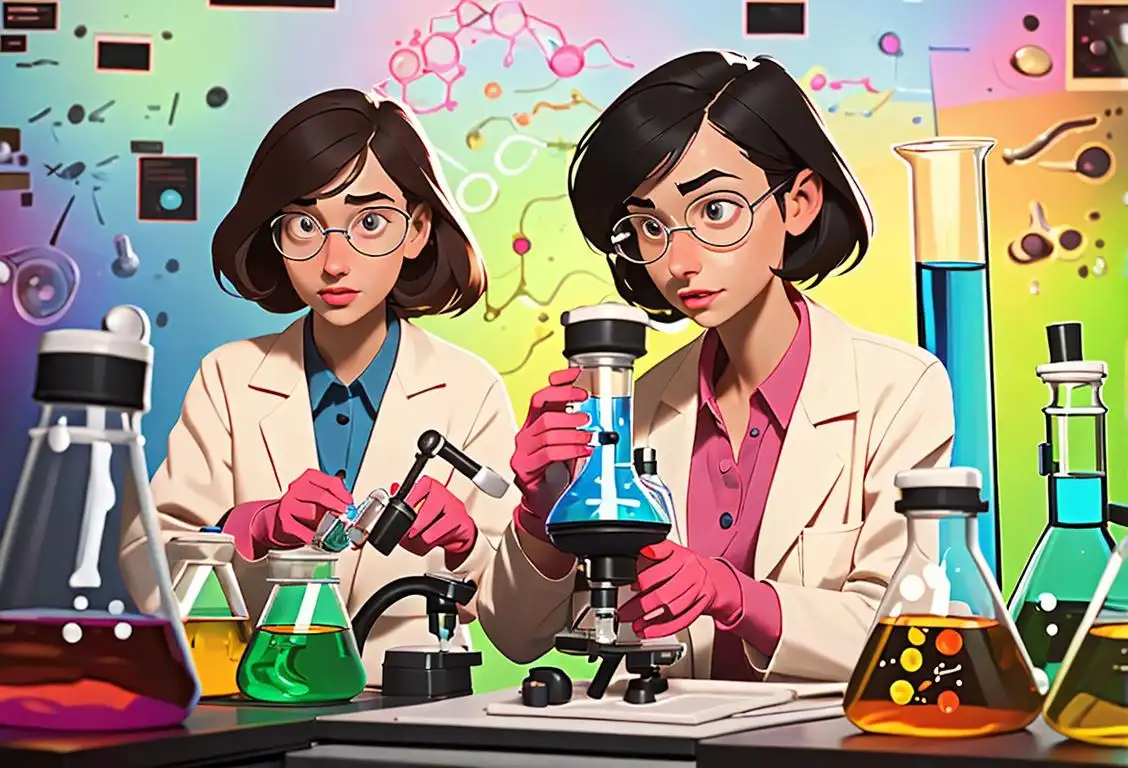National Girl In Science Day

Hey there science enthusiasts! Get ready to celebrate National Girl in Science Day, a day dedicated to recognizing and empowering girls in the field of science. This is a day to embrace the power of curiosity, intelligence, and all the incredible contributions girls make to the scientific world. So put on your lab coats, grab your goggles, and let's dive into the fascinating world of science!
When is Girl In Science Day?
It's national girl in science day on the 8th November.
A Brief History of National Girl in Science Day
Back in 2016, the inaugural National Girl in Science Day was established to encourage young girls to pursue their passion for science, technology, engineering, and mathematics (STEM). With a mission to break down gender stereotypes and inspire girls to reach for the stars, this special day has since gained widespread recognition and support.
On this day, various organizations, schools, and communities come together to organize events and activities. From interactive workshops, mentorship programs, and hands-on experiments to panel discussions and inspiring talks by leading women in science, there are endless opportunities to engage and celebrate.
Why Celebrate National Girl in Science Day?
It's no secret that women have played pivotal roles in advancing scientific discoveries throughout history. Yet, they often face obstacles and stigmas that discourage them from pursuing careers in STEM. National Girl in Science Day seeks to bridge this gender gap by highlighting the achievements of women in science and fostering an inclusive and supportive environment for young girls.
By celebrating this day, we empower future generations of female scientists, engineers, and inventors. We encourage them to dream big, challenge the status quo, and embrace their passion for scientific exploration. After all, the world needs more brilliant minds to help solve complex issues and shape a brighter future.
A Fun Fact for National Girl in Science Day
Did you know that the first computer programmer was a woman? Ada Lovelace, also known as the Countess of Lovelace, was an English mathematician who worked alongside Charles Babbage on his analytical engine. She is considered the world's first computer programmer, as she developed a method to program the machine, even before it was built! Ada Lovelace paved the way for future generations of women in technology and serves as an inspiration to aspiring female scientists everywhere.
History behind the term 'Girl In Science'
1833
First Women's College Opens
In 1833, the first women's college was established in the United States. Named the Georgia Female College, it aimed to provide women with higher education opportunities. This marked a significant step towards breaking the gender barrier in education and encouraging girls to pursue academic paths.
1862
The Morrill Act Opens Doors
The passage of the Morrill Act in 1862 granted federal lands to states for the establishment of colleges focused on agricultural and mechanical arts. As a result, several institutions were founded across the United States that allowed women to study scientific subjects alongside men. This move provided a platform for girls to explore scientific disciplines and fostered a shift in societal perceptions about women's capabilities in these fields.
1871
Maria Mitchell Breaks Boundaries
In 1871, Maria Mitchell became the first female professional astronomer in the United States. Her pioneering work and remarkable achievements in the field of astronomy inspired girls to explore science further. Mitchell's contributions demonstrated that women could excel in scientific pursuits, encouraging the next generation of girls to embrace the world of science.
1893
Ellen Henrietta Swallow Richards Makes History
In 1893, Ellen Henrietta Swallow Richards made history as the first woman to be admitted to the Massachusetts Institute of Technology (MIT). Richards went on to graduate with a degree in chemistry and became a prominent figure in the field of environmental science. Her breakthrough accomplishments served as an inspiration for girls interested in scientific explorations, proving that gender should not limit scientific pursuits.
1960s
The Rise of Feminism and Science
During the 1960s, the feminist movement gained momentum, advocating for gender equality in all aspects of life, including education and employment. This social progress influenced how society perceived girls in science and prompted the creation of organizations and initiatives aimed at enhancing opportunities for women in scientific fields. As a result, more girls were encouraged to pursue careers in science and technology.
2004
Take Our Daughters and Sons to Work Day
In 2004, Take Our Daughters to Work Day evolved into Take Our Daughters and Sons to Work Day. This shift aimed to promote gender equality and encourage all children to explore career options regardless of their gender. The expanded initiative still provides a platform for girls interested in science to witness the possibilities and potential within scientific professions.
Did you know?
Did you know that the first computer programmer was a woman? Ada Lovelace paved the way for future generations of women in technology and serves as an inspiration to aspiring female scientists everywhere!Tagged
awareness funFirst identified
5th November 2015Most mentioned on
8th November 2015Total mentions
462Other days
Nurses Day
Former Prisoner Of War Recognition Day
Press Day
Handloom Day
Heroes Day
Memorial Day
Dance Day
Bestfriends Day
Liberation Day
Love Your Pet Day









